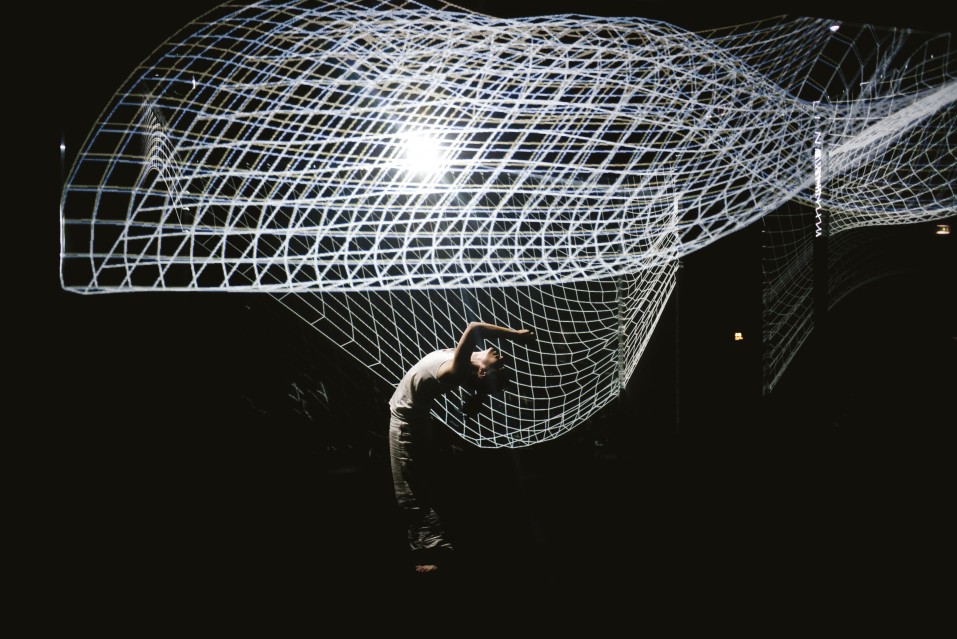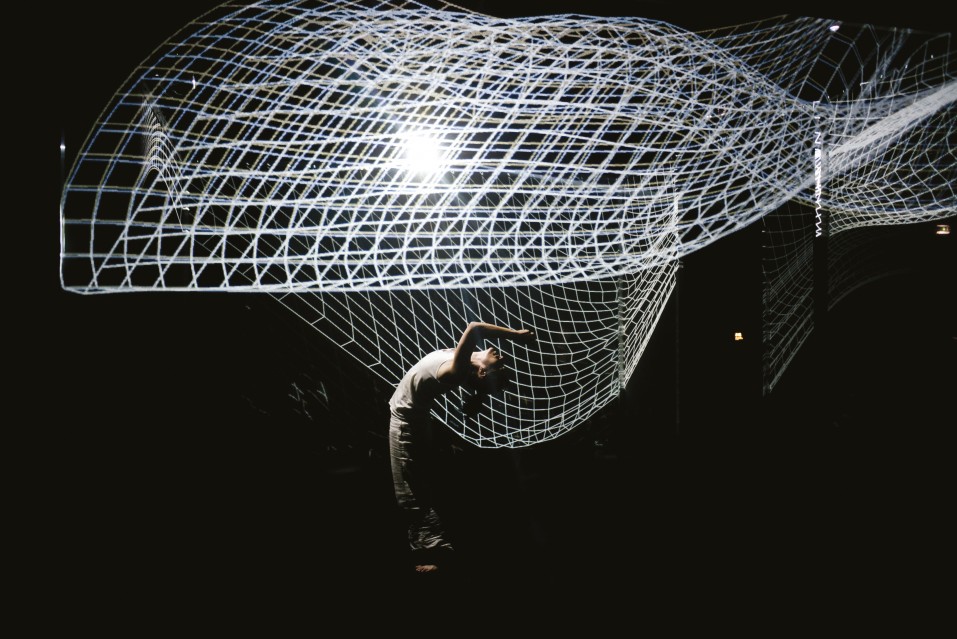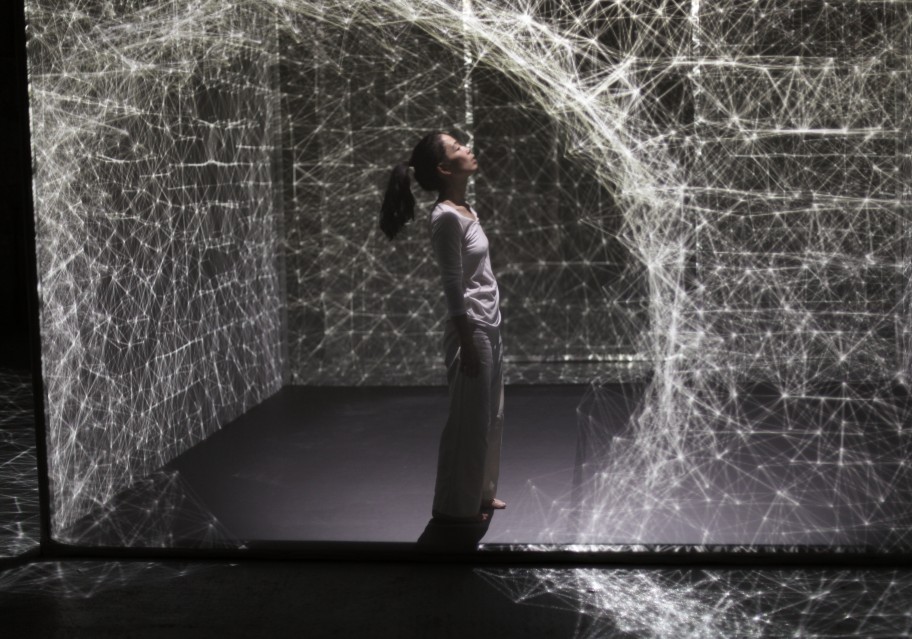

Blurring the lines between virtual and reality in a new digital art performanceAdrien Mondot and Claire Bardainne (collectively known as Adrien M/Claire B) stretch the boundaries of the physical world in their latest art performance Hakanaï. Hakanaï, essentially a portmanteau of the Japanese words for man and dream attempts to define what is impermanent, fragile, fleeting and transient, between dream and reality. "We like to cross the boundary between reality and virtuality, as much as between stage and audience," explain Mondot and Bardainne. This becomes apparent with a live performance that sees a dancer manipulate the virtual world as if it's second nature. Equipped with motion sensors and six projectors, a tulle-lined cube frames the performance while computer graphics and an accompanying soundtrack follow the movements of a dancer, creating “virtual puppetry”. The eMotion software for the project was developed in-house, based on video gaming technology. The CGI graphics feature organic structures that react in a seemingly natural way following mathematics based on observations of nature. "We always develop our own software because for creating specific emotions we need to have specific tools,” explain the duo. “Generative projection allows us to explore wide new landscapes in the performing art field. It's lightweight and easily editable, it can shape and transform the space quickly. There are a lot of examples in the mapping field, but not so many in dance." We're observing a number art institutions making use of technology to engage their audience in a way that goes beyond traditional art perception, as seen with projects like Tate Sensorium and Bob-Omb. Another project, The Octave of Visible Light, utilizes physical impulses from the spectators and incorporates them digitally to the installation itself.





Discussion